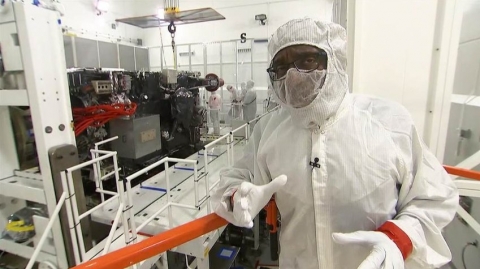Aug252016
Posted at 10:40 AM
As seen on the TODAY show this morning, Al Roker got an exclusive first look at NOAA's upgraded weather satellite, which will scan the skies five times faster, with four times the image resolution while it’s in orbit. In six months, this new device will send back more weather data than all U.S. weather satellites combined over the last 41 years.
GOES-R arrived in Florida at NASA’s Kennedy Space Center earlier this week. Once launched, the satellite will offer three times more data with four times greater resolution, five times faster than ever before. This means faster and more accurate data for NOAA's National Weather Service. GOES-R will improve hurricane tracking and intensity forecasts, increase thunderstorm and tornado warning lead time, and enhance space weather monitoring.
NOAA satellites enable our meteorologists to issue forecasts that save lives and protect communities and property -- before and during storms. GOES-R is expected to launch on November 4, 2016 from Cape Canaveral.
Stay informed as GOES-R moves closer to launch by visiting the GOES-R mission page and NOAA's Satellite and Information Service.


